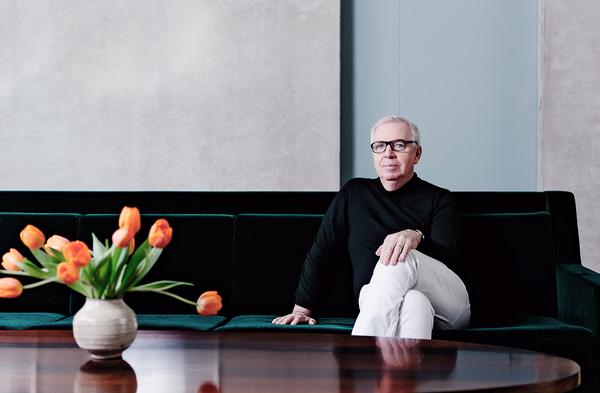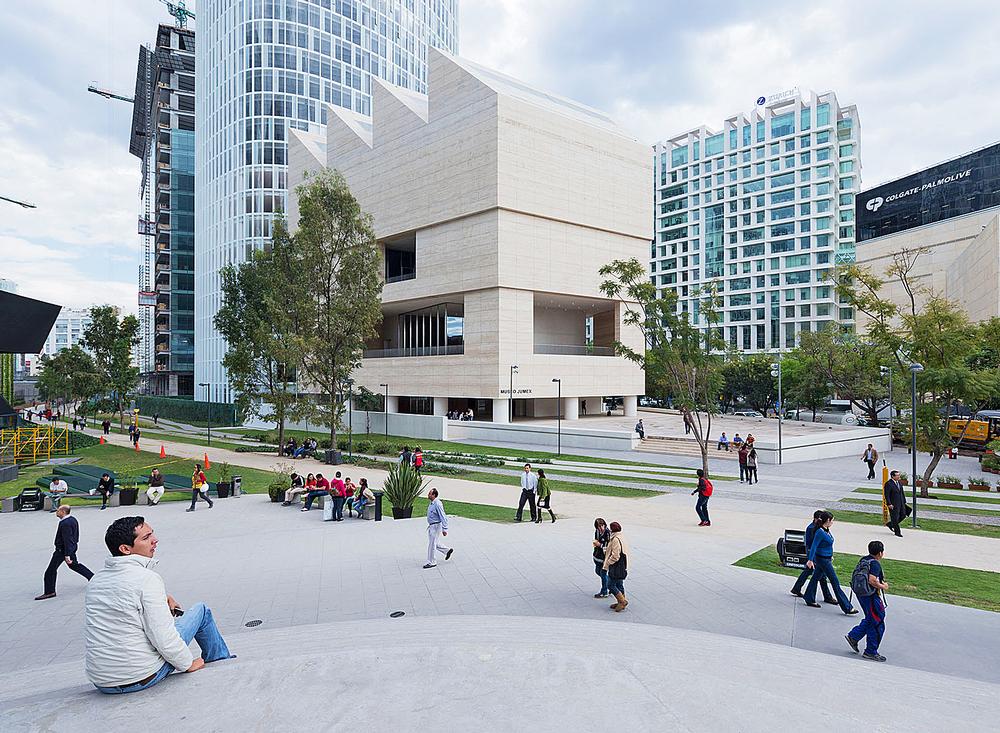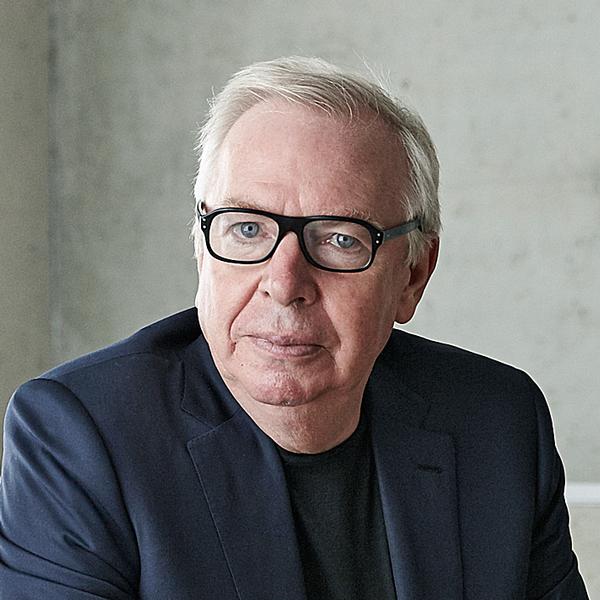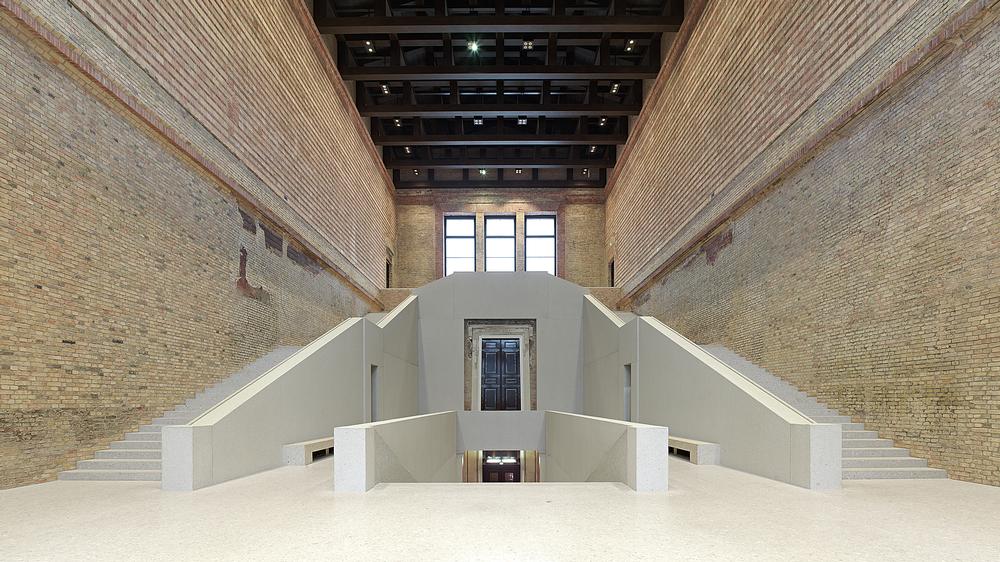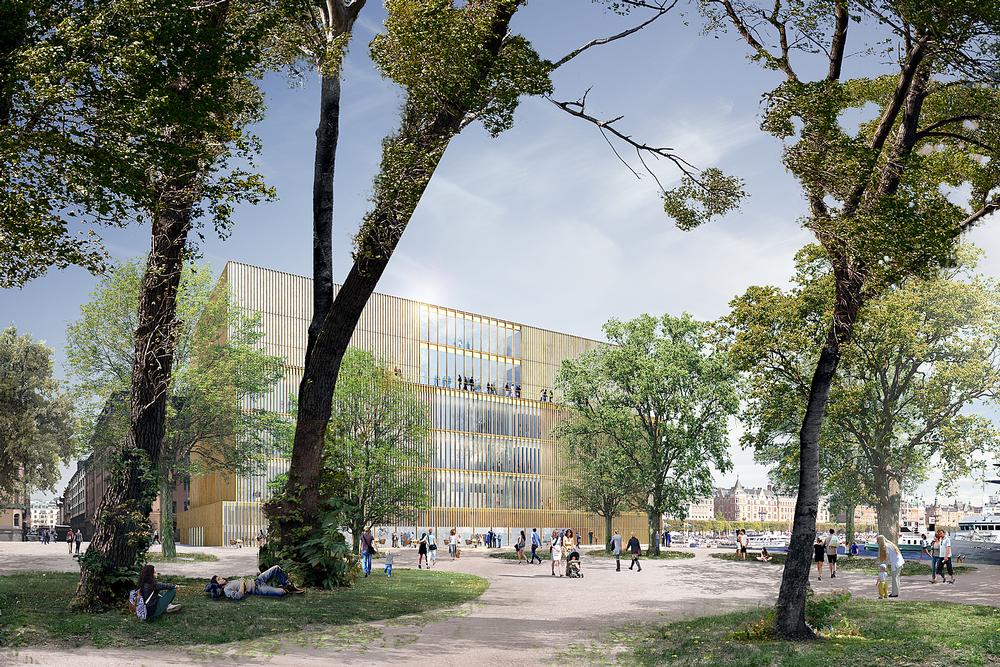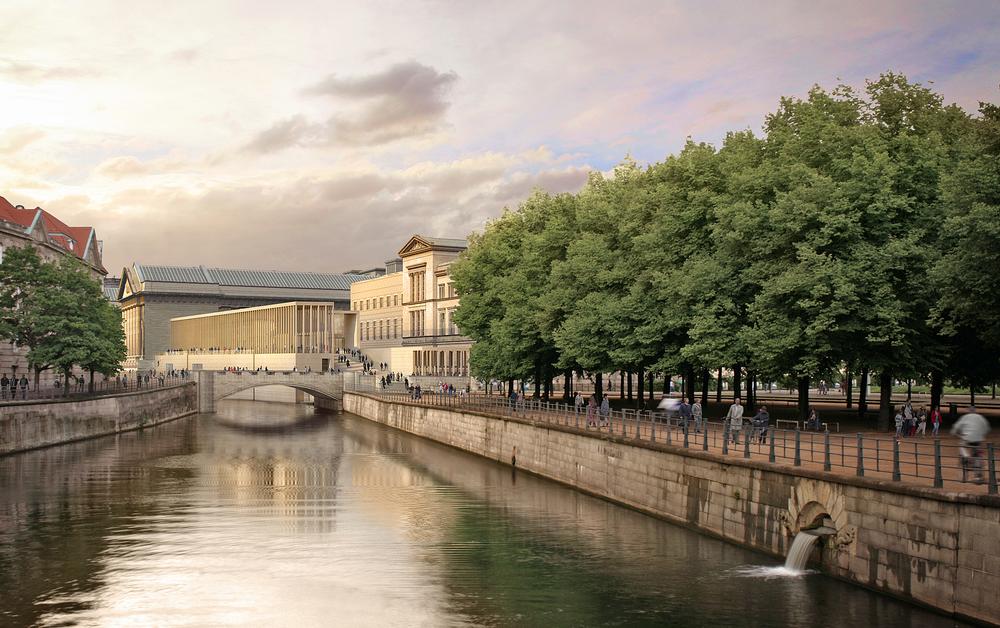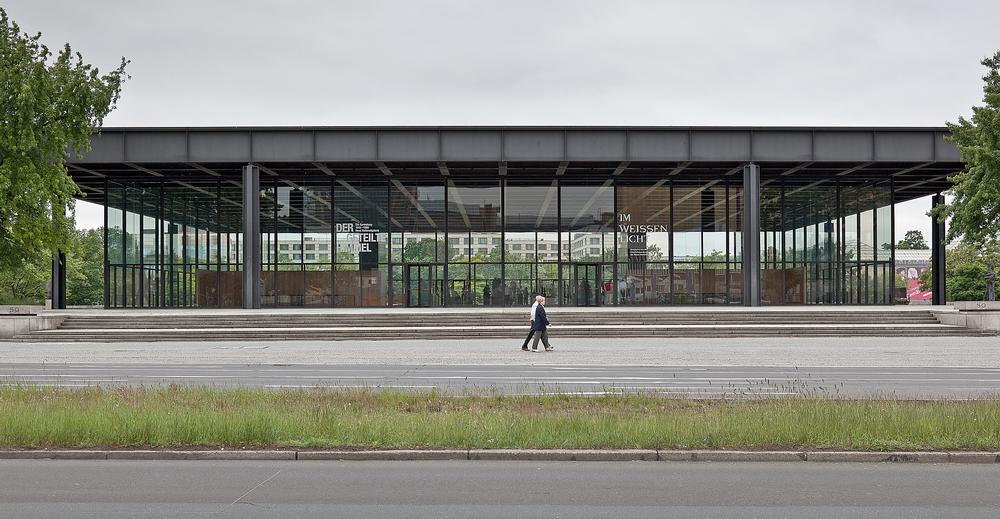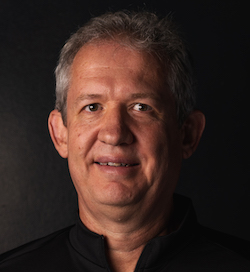features
Interview: David Chipperfield doesn't hold back on Brexit, the media and the problem with planning
The British architect talks to Magali Robathan about Brexit, our changing cities and the media’s hunger for controversy
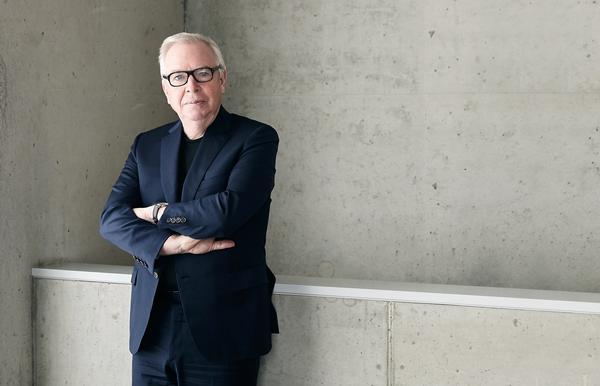
The danger in architecture is that we’re being encouraged more and more to create signature buildings; things that are photogenic and that will look good in magazines,” says David Chipperfield.
“As I get older, I’m much less interested in architecture per se. I’m more interested in the societal issues of architecture and how we should be dealing with the development of our cities; with issues of public space and the public realm.”
I’m sitting around a table with Chipperfield, and we’re discussing the changing face of our cities. I ask him why it’s important that the spaces we spend our leisure time in are well designed.
“Because they represent the things that connect us,” he says. “Contemporary society tends to celebrate and exaggerate individualism, but we are resilient creatures that want to gather together.
“Why do we go to restaurants and pay a fortune for something that we could have cooked at home, to sit in a room with 50 other people we never speak to? It’s our desire to be part of something bigger; to be part of society.
“Our cities used to be very representative of those ambitions,” he continues. “But gradually territory is being privatised. We’re less and less able to give a form to those ambitions, and – particularly in the UK – we rely increasingly on the private sector to make gestures towards the public.In the Germanic world, I feel that there’s a strong public voice. There are still planners with this philosophy and the State still has a voice. In Britain, there’s no coordinated public voice.”
Despite being British, David Chipperfield has always worked more outside the UK than within it, and his view of architecture is a global one.
His practice, David Chipperfield Architects (DCA), is currently working on museum projects in Sudan, Germany, China, India, Switzerland and the US, as well as a whole range of other high-profile jobs including the Nobel Center in Stockholm, an overhaul of the Royal Academy of Arts in London and the refurbishment of Mies van der Rohe’s Neue Nationalgalerie in Berlin.
To say he’s busy is something of an understatement. In the four days before we meet in Berlin, he tells me he’s been to London, New York, Zurich and Stockholm, and this travel pattern is typical of his jet-setting life.
“I’m involved in everything we do,” he explains. “The directors here stress-test every project; we rattle each one until we think it’s the best it can be. We never stop.”
We meet in DCA’s Berlin office, which is housed in a former piano factory that was itself restored and extended by the practice. It’s an attractive complex arranged around a central courtyard, with a staff restaurant that’s also open to the public.
“At lunchtime, you’ll see 200 people accumulating in this courtyard, having lunch; from our office, but also from other offices and other streets in the area,” says Chipperfield. “This, in a microcosm, represents our social ideas about what an organisation should be.
“We want to create buildings with a certain architectural integrity,” he adds, “and we want to give those buildings meaning by being purposeful in a societal way.”
BUILDING A REPUTATION
Chipperfield trained at Kingston School of Art and the Architectural Association. Early in his career, at the start of the 1980s, he worked for Richard Rogers and then for Norman Foster.
“One of the biggest things I took away from working in those two offices was the sheer energy and enthusiasm,” he says. “These guys really thought they were changing the world. It was a very inspiring environment to work in.
“Both of them were societally engaged,” he continues. “If you think about the Pompidou Centre, that was probably the last great radical building – much more radical in a way than Gehry’s Guggenheim Bilbao. Bilbao was radical in terms of its form but Pompidou was radical about architecture itself and about society and the idea of accessibility to cultural buildings.”
Chipperfield founded his own practice in London in 1985. His first project was a new store for Japanese fashion designer Issey Miyake on London’s Sloane Street. This job led to more work in Japan, a country Chipperfield has said he admires for its attention to detail and sensitivity when it comes to creating simple things.
Although he started out in England, Chipperfield found it a difficult place to work as a young architect, and made his name with a series of projects abroad that include a library in Des Moines, Iowa; a museum in Alaska; new law courts in Barcelona; and, of course, the Neues Museum in Berlin. More recent high profile projects include the St Louis Art Museum in Missouri and the Museo Jumex extension in Mexico City, which was shortlisted in 2016 for the first RIBA International Prize.
“We made our career as a practice by going outside England and entering competitions,” says Chipperfield. “There were no such competitions in England. The professional environment in the UK hasn’t really nurtured young architects. Because of the focus on the commercial, it’s hard to get investors and developers to take a risk.
“Decision-makers in the commercial sector don’t look at young architects and say, ‘Have they done an office building before? No, but I think they’re talented, let’s give them a chance’.
“They don’t do that. Why would they?”
Chipperfield’s first major project in his home country came in the shape of the River and Rowing Museum in Henley-on-Thames, where he created a bold, modern building while keeping traditionalists happy with a pitched roof and a weathered timber exterior that referenced wooden barns and boat sheds.
The museum was well received, and won a number of awards, but it was another 14 years before David Chipperfield finally received more formal recognition in the UK. In 2011, Chipperfield completed two major public art galleries in the UK – the Hepworth Wakefield and the Turner Contemporary in Margate – and was awarded the RIBA Gold Medal in recognition of a lifetime’s achievement in architecture.
THE NEUES MUSEUM
While the UK might have taken a while to recognise Chipperfield’s talents, this didn’t hold him back, and he continued to work on a series of interesting, high profile projects abroad. In 1997, he won the competition for what was to become one of his most important and best loved projects – the Neues Museum in Berlin.
When he won the competition, the old museum was in ruins, having been extensively bombed during the Second World War and neglected ever since. Chipperfield’s winning idea was not to try to recreate the original building, nor to build something shiny and new, but to create a hybrid of the old building, ruins and new work, re-establishing its general form.
The project took 12 years, and required immense patience and attention to detail. Every surface and detail was considered and debated. Murals and friezes were painstakingly restored by conservation specialist Julian Harrap, bullet marks and shrapnel scars were left untouched in parts, and bold new spaces were created by Chipperfield where restoration wasn’t possible. Through it all, the team had to work to deliver the idea politically. There was serious concern about the project from some Berliners who wanted full reconstruction of the building, and a sustained campaign was mounted against Chipperfield’s plans.
For Chipperfield, this debate was something to be welcomed; an indication that citizens were passionate and interested in the project.
“It was a healthy dialogue,” he says. “There were 500 newspaper articles about the Neues Museum, and probably 200 were against and 200 were for it. But in the end it doesn’t matter. The building is built and then it’s resolved. And actually the criticism was perfectly valid. I don’t expect people not to criticise the process.”
The end result was a huge success, with the German public queuing for hours to see the finished museum and Angela Merkel describing it as “one of the most important museum buildings in European cultural history.”
The Neues Museum is one of my favourite buildings, and I tell Chipperfield that I found it both beautiful, and very moving.
“That’s because it deals with history,” he says. “It deals with bigger issues than just architecture, but at the same time it does deal with architecture.
“You can say, this is really beautiful, and you can also say, this means something.”
CHANGING CITIES
With offices and homes in both Berlin and London, Chipperfield is well placed to speak about the differences in the nature of development in Germany and the UK.
“In the UK, we have a tendency to embrace the market in a way that’s quite different from Germany,” he tells me.
“There’s no doubt that in all European countries, the state is weaker than it was and private investment is stronger. The question is, can our cities find a balance between the energy and the gift that investment gives and the independent qualities that the city and its citizens enjoy. That balance is a very difficult one.
“In Britain, we essentially allow planning to be overtaken by investment. In London now I think there is planning permission for a further 200 towers right now, and more in the pipeline. Those are money packets; it’s not about building a city.
“Each investor will try their hardest to make a good building. They’ll say ‘we have a good architect, we’re spending a lot of money, we’re trying to do it right’. I think they’re being genuine about that, and investors in Britain now are a million times better than they were 20 years ago. However, they’re still working on projects one by one that don’t necessarily add up to anything.”
Chipperfield uses the example of the Paddington Basin redevelopment project in London to illustrate his point. “The developer has good architects, and a good masterplanner; they’ve spent a lot of money on granite paving and landscaping,” he says. “Have they built a new piece of city? Absolutely not. It could have been a new part of London, but instead it’s an island.
“In Europe, the bigger vision would come from the city itself. The private sector and public sector work together. You get buy-in from the community; you get buy in from the planners. In the UK, there’s no proactive engagement in the planning. proces”
He gives a short laugh. “We call our planners ‘development control officers’. The attitude is like when you have mice in your house and you need ‘pest control’, to hold things back. It’s a very clear demonstration of the move from a pro-active idea into a reactive one. Planning departments are underfunded and overwhelmed.”
Chipperfield believes strongly that different cultures should learn from one another, which is one of the reasons he was devastated by the referendum that saw the UK vote to leave the EU.
“It was one of the worst decisions ever made,” he says. “When we have got so much to learn and so much to give to others culturally, building walls is just the daftest thing ever. All of the things that we can learn from our European colleagues are going to be abandoned.
“It’s bad for the mind. It’s bad for culture. It’s going to be very bad for British architecture.”
LOOKING FORWARDS
On a personal level, and for his practice, these are hugely exciting times, says Chipperfield. This year sees the completion of several projects, including phase one of the Carmen Würth Forum in July. This sees the launch of a chamber music hall in Germany designed for the wholesaler Würth Group.
“I think it’s very interesting that a German private company builds a cultural centre for its staff and for the locality,” says Chipperfield.
This year also sees the opening of The Bryant Tower, a high end hotel and residential tower in New York City, and the Inagawa Cemetery Chapel and Visitor Centre in central Japan.
Looking further ahead, DCA is working on so many diverse, interesting projects that it’s difficult to know where to start.
One of the highest profile is the Nobel Center in Stockholm, which won full planning approval in February following a series of legal challenges. The project – which Chipperfield describes as “extraordinary” – is situated on Stockholm’s waterfront, and will give the Nobel Prize a permanent home for the first time. The new building will house almost all of the foundation’s activities and will feature an auditorium for lectures and discussions, a restaurant and a bar.
“Nobel is an honourable institution,” says Chipperfield. “It’s quite a remarkable prize, to do with the betterment of society.
“By creating a headquarters for the organisation, we’ve had to think with the client about what Nobel could become; how it could do more of what it does – as a centre of dialogue and discussion as well as a celebration of individual achievement. That discussion has been really fascinating.”
For the client, Chipperfield has designed a cuboid 25,000sq m building clad in bronze vertical fins, with the auditorium at the top of the building and a new public space beside it.
It’s a project that has divided opinion in Sweden, with opposition from local campaigners worried about the impact it will have on Stockholm’s Blaisieholmen district. Even Sweden’s monarch, King Carl XVI Gustav, has expressed reservations about the project, telling the Dagens Nyheter newspaper last year, “[while] the purpose is laudable, the fact that the building has become so big, and has landed a bit in the wrong place, is a shame.”
When I ask Chipperfield about the controversy, he shakes his head in mild irritation.
“It’s not controversy, it’s dialogue,” he says. “I don’t think the criticisms were excessive. If you’re putting a big building in the middle of a city, I would expect people to present concerns. Why not? It’s very healthy. It’s part of the planning process. It’s just the media starts saying it’s a controversy and ringing you up and asking about it.”
Meanwhile, Chipperfield’s James Simon Galerie is taking shape in Berlin – the building topped out in 2016 and is due to be completed in 2018. It will serve as a new entrance for the five museums on Museum Island and will relieve the strain on the historical buildings by assuming the central service functions for the whole complex.
“This is a really important project for us,” he says. “It deals with a lot of problems that the museums have in terms of circulation and also in terms of programming, because it will add an auditorium, and temporary exhibition space. And I think it will enhance the urban conditions, when you go into the building or even if you just walk past it.
“Architecture has a responsibility to the passing person, not just to the people that visit or work in the buildings we create. Primarily we have a responsibility to the person that pays our bill, but we do not lose sight of the fact that we also have a responsibility to everybody else.”
Also in Berlin, Chipperfield is overseeing a major renovation of Mies van der Rohe’s iconic Neue Nationalgalerie, which will restore damaged parts of the original buildings and address several safety concerns.
“We’re not adding anything to the building,” says Chipperfield of the project. “It is not an extension or an enlargement – it’s a repair and improvement project. When you go into it at the end, it should look better than it ever did, but you shouldn’t know that anything happened to it.”
Other ongoing projects include the redevelopment of New York’s Metropolitan Museum of Art’s South Wing (currently on hold while the museum organises finance for the project), the transformation of Eero Saarinen’s former US Embassy in London’s Grosvenor Square into a hotel, an overhaul of the Royal Academy of Arts building in London, the construction of the enormous Zhejiang Natural History Museum in China and a new headquarters for the innovative cosmetic company Amorepacific in Seoul.
Chipperfield tells me this is the most exciting period of his career, because of the quality of projects he’s working on, and because his reputation means he doesn’t have to worry about the future in the way he used to.
“For the first 10 years of your professional life, you’re basically fabricating something that’s not very real,” he says. “You feel like a child in a train driver’s uniform pretending to be a driver – you don’t really have a train but you’ve got the costume.
“For the next 10 years you’re trying to keep this thing afloat, and then for the following 10 years you’re trying to do substantial works.
“Today we have incredible talent and wonderful collaborators. It’s not easy, but it’s easier in the sense that at least I don’t have to pretend to be an architect anymore. We have some credibility, which it is our responsibility to use.
“My fear now is not about survival, it’s about whether one can optimise the enormous privilege we now have professionally,” he says. “The worst thing we could do would be to not live up to that.
“These are good years,” concludes Chipperfield. “We have some phenomenal opportunities. I feel more engaged than ever.”
CHIPPERFIELD: Selected ongoing projects
Kunsthaus Zurich extension
Zurich, Switzerland
A major extension to the Kunsthaus Zurich in the shape of a new building which will house a collection of classic modernism, the Bührle Collection, temporary exhibitions and a contemporary art collection. A passageway running underneath the square links the Kunsthaus with the new extension.
Due for completion 2019
Royal Academy of Arts
London, UK
Renovation and reconfiguration of the Royal Academy of Arts. Galleries will be expanded, a new lecture theatre and a learning centre will be created and Burlington House and Burlington Gardens will be connected via a new bridge.
Due for completion 2018
Nobel Center
Stockholm, Sweden
New headquarters for the Nobel Foundation, featuring an auditorium, exhibition and education areas, a restaurant, bar and outdoor public space.
Due for completion 2019
The Bryant
New York CITY, US
33 storey tower in New York's Manhattan, housing luxury apartments and a hotel.
Due for completion 2017
Zhejiang Museum of Natural History
ZhejIang province, China
Creation of huge 54,000sq m new complex for the Zhejiang Museum of Natural History, consisting of eight pavilions arranged around a central garden.
Due for completion 2018
Conversion of the former US Embassy
London, UK
The Eero Saarinen-designed former US Embassy in Grosvenor Square is being redeveloped into a hotel, spa and ballroom designed by DCA.
Due for completion TBC
Neue Nationalgalerie
Berlin, Germany
Refurbishment of Mies van der Rohe’s Neue Nationalgalerie to address safety concerns and restore damaged parts of the original building.
Due for completion 2019
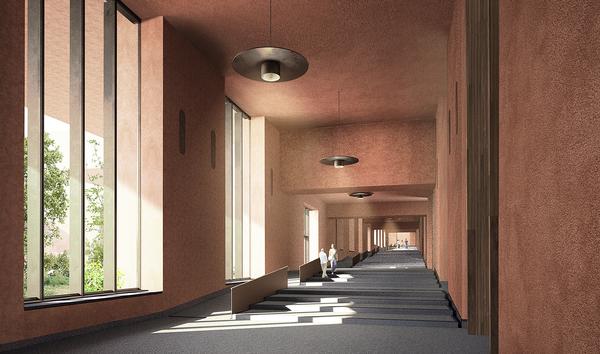
IN HIS OWN WORDS
DAVID CHIPPERFIELD ON...
On the last building that impressed him
The Hamburg Philharmonie. It’s a very impressive achievement.
On the role of architecture
As architects, we work in two different modes. One is physical – architecture is in some ways ‘stuff’; it's space, it's material, it's light, it's a window.
At the other end of the spectrum, we're interested in societal issues. Building a nice façade in the city doesn't mean much if there isn't a bigger idea of the city and how it fits in. Building a nice building that doesn’t stimulate how one sees society is a bit weak.
Ideally, as architects, we like to bring these two things together.
On Brexit
Isolating ourselves intellectually and culturally from Europe is a shocking thing to do because we have so much to learn from one another, and so much to contribute.
On the books that have affected him
I’ve just read an interesting book by Ben Lerner, who is a friend of mine, called The Hatred of Poetry. I found it fascinating.
I recently read George Elliott’s Middlemarch – I couldn’t understand why I hadn’t read it before. It’s wonderful.
I also read Don Quixote for the first time two or three years ago. For me, it’s one of the greatest books.
Germany vs UK – working practices
The UK is obsessed with deregulation and the de-protection of professional processes, the importance of the market and of the client. Europe still holds onto strong professional standards which have to do with protecting the territory within which professionals work.
In Germany, the way we are obliged to treat our staff is very un-British.
You could say the obligations we have towards our staff are not business-friendly, but they are society-friendly, they are people-friendly. They’re the right thing to do.
On his legacy
Of course, there’s a responsibility to think about how this thing carries on. The good thing is, God willing, 63 is not the end of your life or of your career. There’s a paradox, because I feel more engaged than ever, and I feel I can do more now than ever, but of course I’m getting older.
As an architect, the question of my legacy is an easy one. It’s the buildings.
"The obligations we have towards our staff are not business-friendly, but they are people-friendly. They are the right thing to do"
